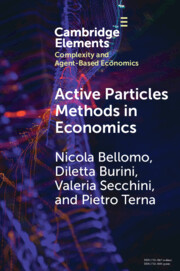Refine search
Actions for selected content:
141 results
Development of a national food system mathematical model for exploring future scenarios and impacts
-
- Journal:
- Proceedings of the Nutrition Society / Volume 84 / Issue OCE2 / June 2025
- Published online by Cambridge University Press:
- 24 July 2025, E156
-
- Article
-
- You have access
- Export citation
Strategies for Closing Global Nutrient Gaps: Enhancing Distribution and Supply
-
- Journal:
- Proceedings of the Nutrition Society / Volume 84 / Issue OCE2 / June 2025
- Published online by Cambridge University Press:
- 24 July 2025, E167
-
- Article
-
- You have access
- Export citation
A DELAY DYNAMICAL SYSTEM’S PERSPECTIVE ON THE GLUCOSE–INSULIN REGULATORY RESPONSE TO ON–OFF GLUCOSE INFUSION
- Part of
-
- Journal:
- The ANZIAM Journal / Volume 67 / 2025
- Published online by Cambridge University Press:
- 22 July 2025, e26
-
- Article
-
- You have access
- Open access
- HTML
- Export citation

Derivatives Pricing
-
- Published online:
- 08 July 2025
- Print publication:
- 20 March 2025
-
- Textbook
- Export citation
Quantifying the direct and indirect components of COVID-19 vaccine effectiveness during the Delta variant era
-
- Journal:
- Epidemiology & Infection / Volume 153 / 2025
- Published online by Cambridge University Press:
- 24 March 2025, e59
-
- Article
-
- You have access
- Open access
- HTML
- Export citation
Testing a proposed mathematical model of weight loss in women enrolled on a commercial weight-loss programme: the LighterLife study
-
- Journal:
- Journal of Nutritional Science / Volume 13 / 2024
- Published online by Cambridge University Press:
- 12 December 2024, e92
-
- Article
-
- You have access
- Open access
- HTML
- Export citation

Active Particles Methods in Economics
- New Perspectives in the Interaction between Mathematics and Economics
-
- Published online:
- 22 November 2024
- Print publication:
- 02 January 2025
-
- Element
- Export citation
Extreme mortality during a historical measles outbreak on Rotuma is consistent with measles immunosuppression
-
- Journal:
- Epidemiology & Infection / Volume 152 / 2024
- Published online by Cambridge University Press:
- 13 May 2024, e85
-
- Article
-
- You have access
- Open access
- HTML
- Export citation
A nutritional modelling framework for inclusion in a Norwegian food system model
-
- Journal:
- Proceedings of the Nutrition Society / Volume 83 / Issue OCE1 / April 2024
- Published online by Cambridge University Press:
- 07 May 2024, E163
-
- Article
-
- You have access
- Export citation
Attitude modelling and real-time robust control of a 3-DoF quadcopter UAV test bench
-
- Journal:
- The Aeronautical Journal / Volume 128 / Issue 1326 / August 2024
- Published online by Cambridge University Press:
- 28 February 2024, pp. 1767-1788
-
- Article
- Export citation
Reconstruction and analysis of the transmission network of African swine fever in People’s Republic of China, August 2018–September 2019
-
- Journal:
- Epidemiology & Infection / Volume 152 / 2024
- Published online by Cambridge University Press:
- 29 January 2024, e27
-
- Article
-
- You have access
- Open access
- HTML
- Export citation
Development of a regional climate change model for Aedes vigilax and Aedes camptorhynchus (Diptera: Culicidae) in Perth, Western Australia
-
- Journal:
- Bulletin of Entomological Research / Volume 114 / Issue 1 / February 2024
- Published online by Cambridge University Press:
- 18 January 2024, pp. 8-21
-
- Article
-
- You have access
- Open access
- HTML
- Export citation
Seroprevalence of Zika in Brazil stratified by age and geographic distribution
-
- Journal:
- Epidemiology & Infection / Volume 151 / 2023
- Published online by Cambridge University Press:
- 15 November 2023, e197
-
- Article
-
- You have access
- Open access
- HTML
- Export citation
Chapter 1 - Teaching mathematics today with tomorrow in mind
-
- Book:
- Primary Mathematics
- Published online:
- 01 September 2023
- Print publication:
- 07 September 2023, pp 1-11
-
- Chapter
- Export citation
Determinants of measles persistence in Beijing, China: A modelling study
-
- Journal:
- Epidemiology & Infection / Volume 151 / 2023
- Published online by Cambridge University Press:
- 22 August 2023, e144
-
- Article
-
- You have access
- Open access
- HTML
- Export citation
Monkeypox: a review of epidemiological modelling studies and how modelling has led to mechanistic insight
-
- Journal:
- Epidemiology & Infection / Volume 151 / 2023
- Published online by Cambridge University Press:
- 23 May 2023, e121
-
- Article
-
- You have access
- Open access
- HTML
- Export citation
12 - Going Viral
-
- Book:
- Dicing with Death
- Published online:
- 18 November 2022
- Print publication:
- 08 December 2022, pp 255-296
-
- Chapter
- Export citation
Gut mutualists can persist in host populations despite low fidelity of vertical transmission
-
- Journal:
- Evolutionary Human Sciences / Volume 4 / 2022
- Published online by Cambridge University Press:
- 02 September 2022, e41
-
- Article
-
- You have access
- Open access
- HTML
- Export citation
Metabolic regulation of subcellular sucrose cleavage inferred from quantitative analysis of metabolic functions
-
- Journal:
- Quantitative Plant Biology / Volume 3 / 2022
- Published online by Cambridge University Press:
- 13 June 2022, e10
-
- Article
-
- You have access
- Open access
- HTML
- Export citation

